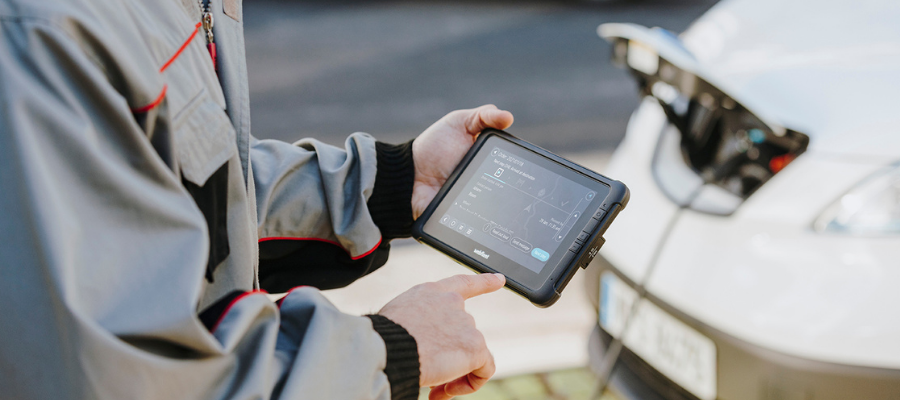🕒 Article read time: 2 minutes
The digital route to tackling the last mile
Sponsored content

Beverley Wise, Sales Director UK & Ireland, Webfleet Solutions – A Bridgestone Company, looks at how telematics can help businesses deliver greener, faster and more affordably.
The financial and environmental cost of last-mile logistics has become an increasing challenge as businesses look to serve more and more customers with greater volumes of goods.
Glance to the horizon and we can see the potential for disruptive innovations – from drones to delivery robots – breaking through to revolutionise the future of transport deliveries.
But with the impact of urban congestion and poor air quality intensifying, there’s a pressing need for businesses to act sooner rather than later.
THE GREEN MILE
While the middle mile – from depot to store – invariably calls for long-haul journeys, the last mile is proving easier to electrify, with the emergence of the electric van providing a welcome sustainability fillip.
Indeed, research conducted using Webfleet Solutions’ Fleet Electrification Planning Report has revealed that 65 per cent of LCVs currently being used commercially in the UK could be replaced by electric models – based on the premise that an EV could offer a suitable alternative to a fossil fuel vehicle driving less than 300km per day.
With the proliferation of emissions charges, and the roll out of Clean Air Zones, the case for electrifying the last mile is growing ever stronger.
Support for the electrification of last-mile fleets can be found in fleet management data, with telematics software providing the intelligence businesses need to make the right transitional choices. Furthermore, it is then playing an integral role in ongoing eLCV management by constantly monitoring battery levels and remaining driving ranges, signposting charging point options and helping optimise charging strategies.
The green engineering of van tyres is mirroring advances in eLCV technology. These are being developed with ever greater precision to maximise fuel efficiency and minimise rolling resistance
Bridgestone’s NanoPro-Tech compound, for instance, employed in its Duravis range of van tyres, has proved to lower the internal friction between the different tyre compound elements. This, in turn, reduces top compound energy loss.
RICH DATA, SMARTER PLANNING
Rich data insights are equally critical to the effective management of time-sensitive deliveries, including the navigation of paralysing traffic congestion.
Telematics systems have long helped digitise route planning, but advancements in functionality – combined with interconnectivity between fleet management software, mobile hardware and office suites – has led to enhanced delivery standards.
With WEBFLEET, Webfleet Solutions’ vehicle management software, for example, the sequence of deliveries can be optimised in just a click of a button. Customers, meanwhile, can also be kept up to date with automatic email or text notifications making them aware of ETAs and changes to schedules as they happen.
In addition, service and communication with customers has been elevated with WEBFLEET’s PRO 8 driver tablet. This connected device not only navigates drivers to their destination via the quickest, most fuel-efficient routes, it can digitally capture customers’ signatures for proof of delivery, an in-built camera can provide real-time visual updates on exact delivery locations, while hosted apps enable important workflow actions to be completed. This means seamless communication with customers about where deliveries are completed, when and who receives them.
With telematics developments showing few signs of abating, innovations that underpin, faster, more efficient and sustainable delivery models look set to continue helping businesses overcome the last-mile challenge.
*www.webfleet.com/en_gb/webfleet/solutions/electric-vehicles/?utm_medium=on
Published On: 17/06/2021 17:00:26

Comments Section
If you are a Logistics UK member login to add comments.